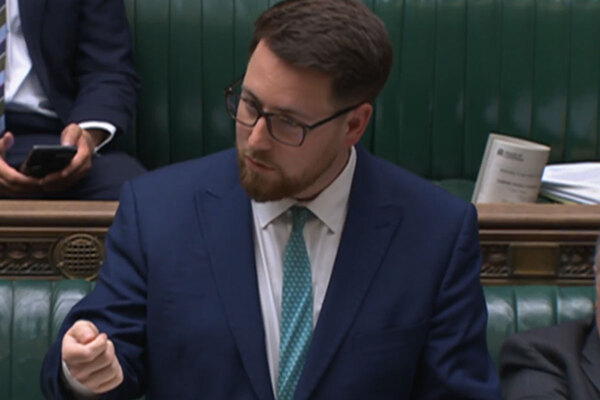You are viewing 1 of your 1 free articles
 Jules Birch
Jules BirchTime for land to be treated as a precious resource
While all focus was on Theresa May last week, a new report looked at the potential benefits of land value capture. Jules Birch takes a look
While all eyes were on the prime minister’s speech at the National Housing Summit you may have missed news that landowners are now making an astonishing £13bn-a-year pre-tax profit just from getting planning permission for housing.
That is the estimate in a new report from the Centre for Progressive Policy (CPP) and the National Housing Federation (NHF) published on the same day as Theresa May was telling housing associations what they wanted to hear.
The £13bn profit made by landowners in England in 2016/17 is up £4bn on 2014/15, thanks to a huge increase in residential land values in the past two years.
Seen from one end of the telescope, that was already more than the profits of the entire UK housebuilding industry, and it is now more than the global profits of Amazon, Coca-Cola and McDonald’s combined.
But the impact can also be seen from the other end of the telescope, with housing association after housing association quoting examples of where they have been outbid by private developers for land.
The sites are often public land, but individual associations report examples of developers who bid a higher price than them only to do nothing with it or sell it on for a profit shortly afterwards.
“Housing association after housing association quote examples of where they have been outbid by private developers for land.”
At the heart of this is the issue of land value capture that was highlighted in a report by the Housing, Communities and Local Government (HCLG) Committee earlier this month.
The all-party committee gave its backing to proposals advocated by the CPP for a change in the law to allow public authorities to capture the increase in the value of land once it gets planning permission for homes (this week’s report has more details on the change that would be needed).
This would bring Britain into line with what happens in countries like Germany, France and the Netherlands.
If that sounds radical, it would essentially be a return to the model used for the post-war new towns, where infrastructure was financed from the uplift in land values, before the law changed to entitle landowners to the ‘hope value’ of future development when land is compulsory purchased.
The idea now has backing from across the political spectrum but so far the government has only tinkered around the edges of it, with housing minister Kit Malthouse telling the committee that a 2017 Conservative manifesto pledge to explore land value capture referred to measures already taken on viability and land value capture.
The £13bn figure sounds (and is) astronomical, but it is based on official government figures on land values for different uses and takes account of value that already gets captured under the current system via Section 106 and the Community Infrastructure Levy.
Take off an estimated £2.8bn in tax and you are still left with a windfall profit for landowners of £10.7bn in one year – essentially a form of housing benefit for the very rich that the report estimates is equivalent to 29% of the value of the average home in England.
If that value could be captured under the proposed alternative, more than £200bn extra could be available over the next 20 years to fund infrastructure investment and affordable housing.
The effect would obviously vary from area to area, but the report estimates that London’s high residential land values could enable it to become “self-sufficient in funding infrastructure and affordable housing”.
Across the country as a whole, previous work by the CPP has estimated that redirecting landowner profits could boost housebuilding output to 280,000 homes a year, with sufficient funding for around 100,000 affordable homes.
If these numbers sound too good to be true, that’s exactly what landowners and house builders told the HCLG committee – they argued that such a policy would be impractical and incompatible with human rights legislation (the MPs rejected this point after hearing evidence from a leading barrister).
Few expect a government with all its attention on Brexit to take much more immediate action, especially when confronted with arguments that a change in the law would undermine an existing system that is delivering more homes and lead to a reduction in land coming forward for development.
“A larger change in the system would require a change in the mindset of all involved.”
However, there is little doubt that land value capture would make a huge difference to proposals for the Oxford-Cambridge corridor (the CPP estimates it could fund the infrastructure plus enough subsidy for 36% of homes to be affordable), or to the new generation of towns and urban extensions long promised by all politicians.
Some individual landowners, like Cambridge University in developing new homes for staff and students or Prince Charles in developing Poundbury, have seen the benefits for themselves.
But a larger change in the system would require a change in the mindset of all involved, by public authorities in regaining the confidence to facilitate large-scale projects and by house builders in moving away from their current business model, but perhaps the process could begin with central government’s attitude towards public land.
The emphasis since 2010 has been on selling it as quickly as possible to the highest bidder. That produces immediate returns for NHS trusts and government departments whose budgets have been throttled by austerity, but it also leads to exactly the sort of problems reported by housing associations that are outbid for sites.
It’s only three years since the Public Accounts Committee revealed that the government was pledging to speed up the release of public land but not even counting the number of homes delivered on it.
For all the improvements in the land selling process promised by Homes England, the government could go further – for example by adopting the NHF’s proposal that at least 50% of homes built on disused public land should be affordable to people on the lowest incomes.
One example of how the current system does almost the exact opposite can be seen in a planning row over a former Ministry of Defence site at Beaconsfield in Buckinghamshire.
The government could also change its own mindset: public land is currently seen as a wasted asset that should be sold off as quickly as possible to the highest bidder to deliver short-term gains for departmental budgets.
But what if it was seen instead as a precious and finite resource that could be at the heart of a system delivering long-term benefits for the country as a whole?
Jules Birch, award-winning blogger
Tech Leaders 2018
We unveil Tech Leaders 2018 - a list of the tech innovators digitally transforming their organisations:
Sponsored by Hitachi Solutions
More on Theresa May's NHF speech
All our coverage of Theresa May's historic speech on 19 September, 2018, in one place:
Orr: 'penny has dropped' for government on housing The outgoing chief executive of the National Housing Federation gives his take on May's speech
LGA warns May’s focus on associations ’misses the point’ about council-led building Reaction to the announcements from Lord Gary Porter, chair of the Local Government Association
Sector leaders hail ‘huge significance’ of May’s NHF speech Housing figures welcome the Prime Minister’s speech to the National Housing Federation’s annual conference in London
May’s speech shows a significant change in attitude towards the sector When was the last time a Conservative prime minister made a speech more favourable to social housing?, asks Jules Birch
In full: Theresa May’s speech to the National Housing Summit The full text of the Prime Minister’s historic speech
Theresa May throws support behind housing associations in landmark speech Read more about Theresa May’s speech which signalled a change in tone from the government towards housing associations
May’s new £2bn funding will not be available until 2022 Homes England clarifies the timescale for allocation of the new money promised by the Prime Minister
Morning Briefing: Labour hits back at May’s £2bn housing pledgeShadow housing secretary John Healey says May’s pledges are not enough
May to announce £2bn for strategic partnerships with associations at NHF conference The details released overnight ahead of the speech
Never Again campaign
In the days following the Grenfell Tower fire on 14 June 2017, Inside Housing launched the Never Again campaign to call for immediate action to implement the learning from the Lakanal House fire, and a commitment to act – without delay – on learning from the Grenfell Tower tragedy as it becomes available.
One year on, we have extended the campaign asks in the light of information that has emerged since.
Here are our updated asks:
GOVERNMENT
- Act on the recommendations from Dame Judith Hackitt’s review of building regulations to tower blocks of 18m and higher. Commit to producing a timetable for implementation by autumn 2018, setting out how recommendations that don’t require legislative change can be taken forward without delay
- Follow through on commitments to fully ban combustible materials on high-rise buildings
- Unequivocally ban desktop studies
- Review recommendations and advice given to ministers after the Lakanal House fire and implement necessary changes
- Publish details of all tower blocks with dangerous cladding, insulation and/or external panels and commit to a timeline for remedial works. Provide necessary guidance to landlords to ensure that removal work can begin on all affected private and social residential blocks by the end of 2018. Complete quarterly follow-up checks to ensure that remedial work is completed to the required standard. Checks should not cease until all work is completed.
- Stand by the prime minister’s commitment to fully fund the removal of dangerous cladding
- Fund the retrofitting of sprinkler systems in all tower blocks across the UK (except where there are specific structural reasons not to do so)
- Explore options for requiring remedial works on affected private sector residential tower blocks
LOCAL GOVERNMENT
- Take immediate action to identify privately owned residential tower blocks so that cladding and external panels can be checked
LANDLORDS
- Publish details of the combinations of insulations and cladding materials for all high rise blocks
- Commit to ensuring that removal work begins on all blocks with dangerous materials by the end of 2018 upon receipt of guidance from government
- Publish current fire risk assessments for all high rise blocks (the Information Commissioner has required councils to publish and recommended that housing associations should do the same). Work with peers to share learning from assessments and improve and clarify the risk assessment model.
- Commit to renewing assessments annually and after major repair or cladding work is carried out. Ensure assessments consider the external features of blocks. Always use an appropriate, qualified expert to conduct assessments.
- Review and update evacuation policies and ‘stay put’ advice in the light of risk assessments, and communicate clearly to residents
- Adopt Dame Judith Hackitt’s recommended approach for listening to and addressing tenants’ concerns, with immediate effect
CURRENT SIGNATORIES:
- Chartered Institute of Housing
- G15
- National Federation of ALMOs
- National Housing Federation
- Placeshapers













